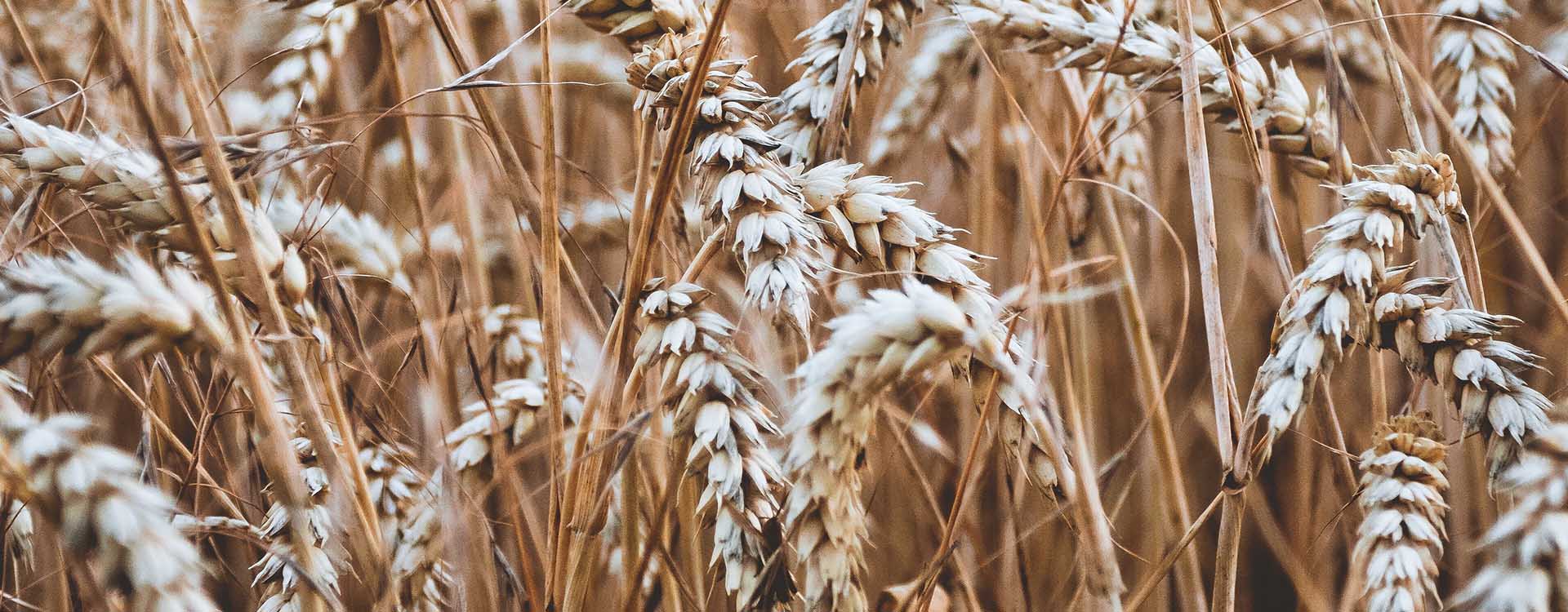

The grain story in Sicily is intertwined with the island story itself, a piece of land centered in the middle of the Mediterranean, which due to its geographical location was, for millenniums, stage of long exchange trips between Asia, Africa and Europe.
A natural crossroad that, unexpectedly, allowed itself to be contaminated from the merchandise varieties that would pass trough. Between those, the wheat.
It was the third millenium when the grain reached Sicily and from now on its cultivation never stopped.
Around fifty are the local varieties that over the centuries were developed trough precise aereas of the region, probably more morphologically adapted to its growth or simply brought there by another foreign colonization.
Our flours comes from the varieties Russello, Tumminia, Russello Ibleo, Bufala Nera, Farro Lungo and Senatore Cappelli.
Russello
Probably the most remarked variety in Sicily in the mid-past century. Russello is born in inland hills and internal high hills areas, having around 130 days ripening before the sowing. The information about its diffusion, in respect to other varieties, are relatively recent, dating to 1927. It’s precious for the production of both pasta and bread.
Russello Ibleo
Its presence Sicily is not well known, it looks like the few information confirm it as a grain variety widespread in the Iblea region in mid 1900. It’s an early ripening wheat, around 120 days after sowing, it’s born in inland hills and coastal areas. It’s mostly used when making bread and ‘pasta dura’ and other local bakery products.
Farro Lungo
Ideal for (in) hills and high hills areas, once late ripening, the Farro Lungo wheat variety grows in fresh and deep soils. The first proof of its cultivation in Sicily date to the begin of 1800, when it was mostly used for pasta production.
Tumminia
One of Sicily’s most old what varieties, dating back to 371 b.C., the Tumminia is also known as Timila. Is born mostly in hills and high hills areas and it closes its productive cycle within three months. Once it was a very appreciated variety, as it was possible to delay the sowing until the first week of march an then, in case of a rainy year where sowing was not possible, who cultivated it could wait until the wet ground got dry to proceed cultivating. Ideal for bread-making, it’s used also for pasta production.
Senatore Cappelli
Considered the father of durum wheat, Senatore Cappelli wheat was selected in the first years of the ‘900 by the geneticist Nazareno Strampelli that gave it the name of Congressman Cappelli, the agricultural modernization process promotor in Puglia. This a very resistant variety and it’s generally adapted to Southern lands and Sicily in particular, since poor and clayey.
Bufala Nera
With a 130 days ripening after the sowing, the Bufala Nera variety is born mostly in mountainous regions. Present in Sicily from many centuries, it has a peculiarity in its seed: during the milling process it shows a powdery breaking rather than glassy.

